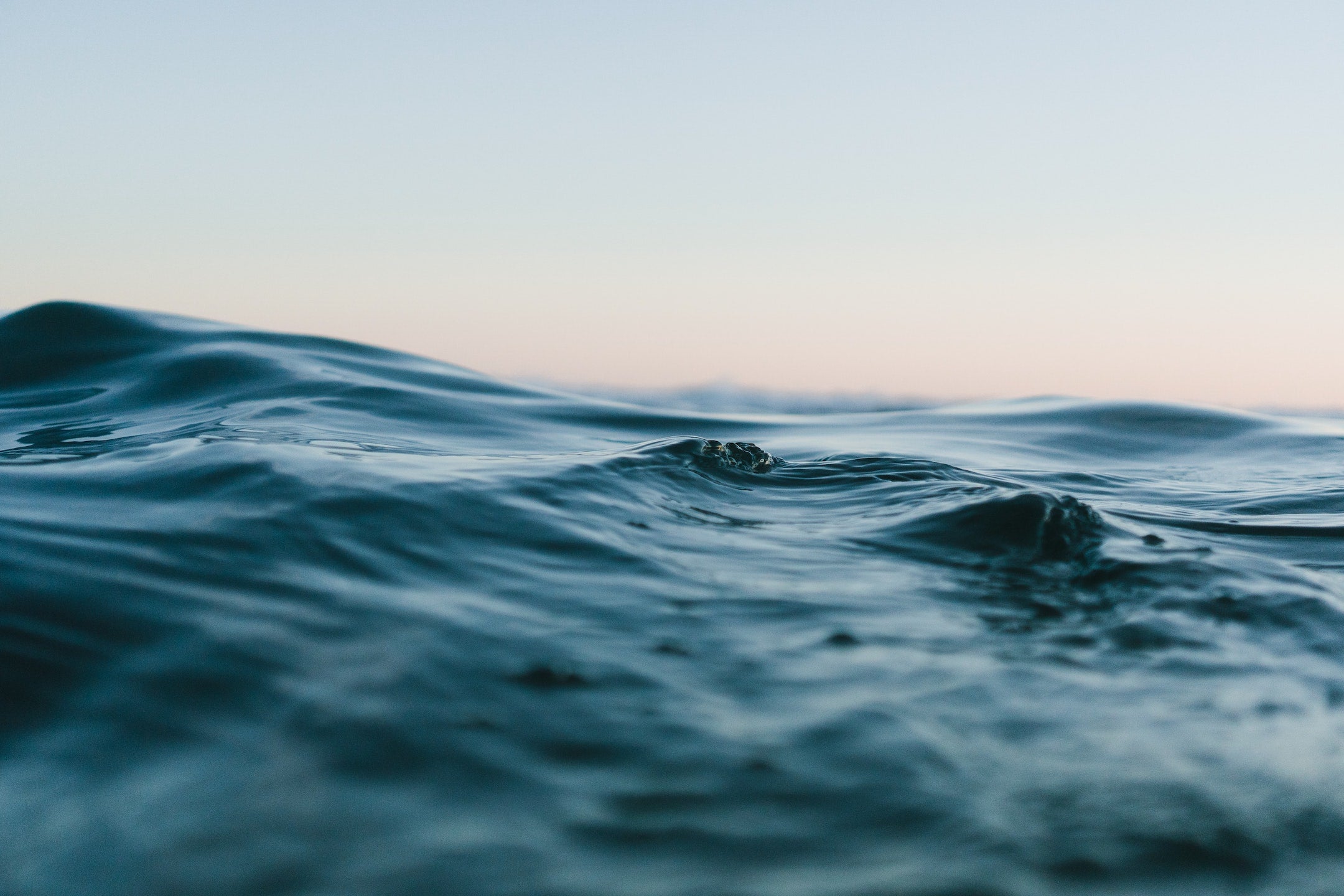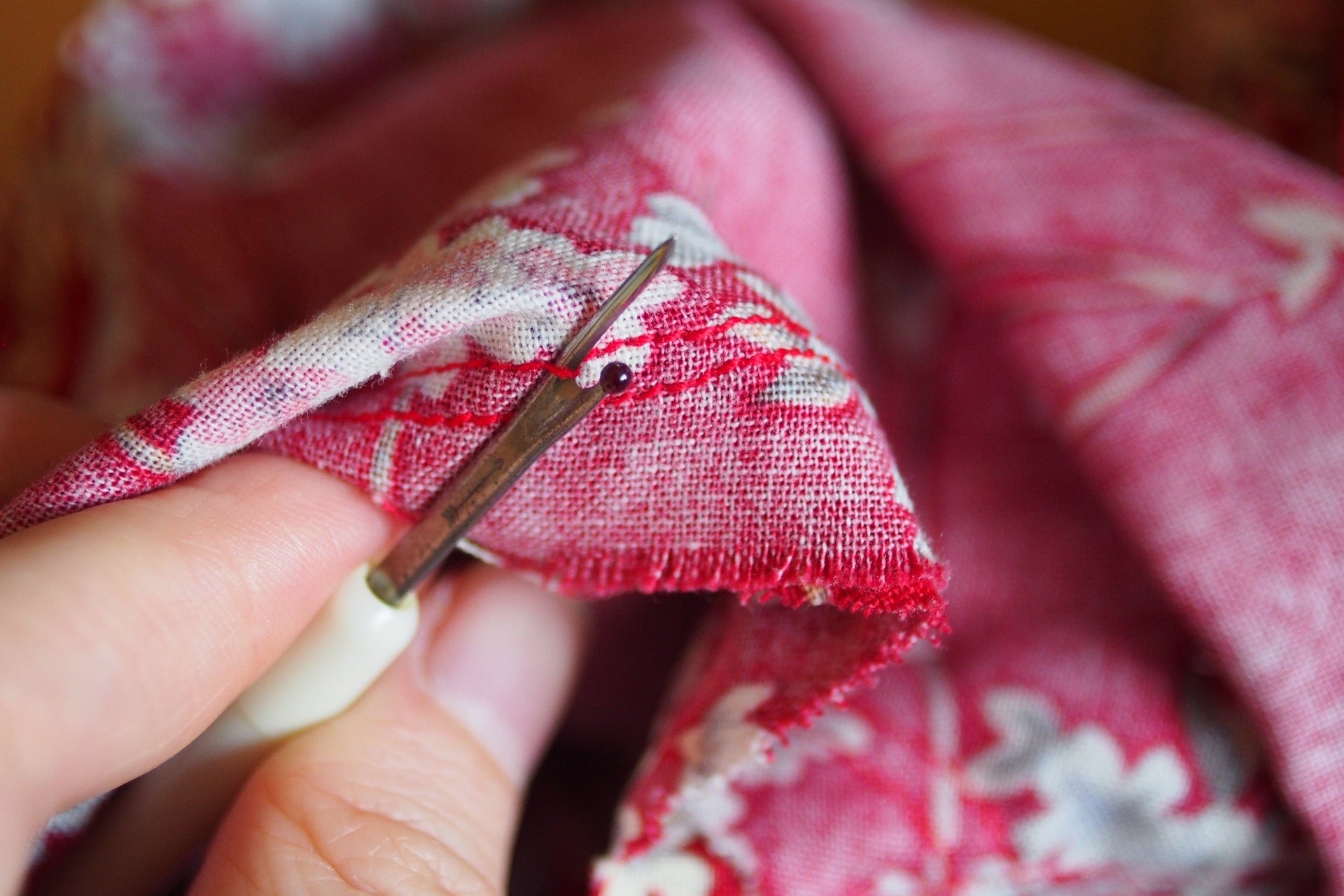Understanding sustainability and “fixing” fashion is like being lost in a labyrinth - extremely confusing, occasionally unnerving, and often overwhelming. But among the myriad problems, a large part of the solution lies at the start of the process: what we use to make our clothes. Thankfully, recent years have given more attention to the R&D of alternative materials.
In this post, we identify 10 of the best natural and innovative fabrics making headway in sustainable fashion.
The problem with today’s materials
The largest barrier is the over-reliance on synthetic fabrics, like polyester, which has become a darling of the industry due to its affordability, versatility, and ease of production. Yet beneath its convenient facade, polyester perpetuates an alarming dilemma: microplastic pollution. The tiny plastic fibres that are shed during washing still find their way into waterways, contaminating marine ecosystems and subsequently entering the food chain, posing a threat to both the environment and human health. That’s before you even consider it’s made from petroleum.
Then there’s the cotton conundrum. Yes, it’s natural. But the production of conventional cotton fabric involves the intensive use of water and chemical additives (pesticides, fertilisers, etc).
On top of all that, a general lack of foresight extends beyond production to the afterlife of garments, rarely considering disposal or recyclability. So in a world supposedly growing in consciousness of its ecological footprint, these flaws in fashion's material choices serve as stark reminders of the need for reform.
The answer to many problems: natural and innovative fabrics
With this collective recognition of the industry’s role in sustainability, comes the intriguing pursuit of innovation in fabrics. Among them are plant-based fibres, lab-grown textiles, and biodegradable materials - all aimed at ecological footprint reduction. Thanks to research, experimentation, and tech-driven collaborations, fashion is finally redefining its aesthetics while honouring the planet.
The main players
Now to the more interesting part!
In our breakdown of the best natural and innovative fabrics, we’ve included an approximate “affordability” rating, where ‘$$$’ represents the more expensive option/s on this list.
1. Organic cotton
- First appeared: 1980s
- Made from: the cotton plant
- Affordability: $
Organic cotton is the most widely available option we’ll mention. Unlike conventional cotton, it’s grown without chemical pesticides and fertilisers. The emergence of regenerative organic cotton takes things a step further, focusing on soil regeneration and carbon sequestration. But don’t forget to look to certifications for extra assurance.
UK-based label POMP - yep, that’s us - offers certified organic cotton basics. We even launched a line dedicated to Show Your Stripes, a now instantly recognisable visualisation of rising global temperatures. This way, discerning shoppers have the chance to make ethical decisions while enjoying high-quality and timeless design.
2. Lyocell/Tencel/Modal
- First appeared: 1980s
- Made from: wood pulp
- Affordability: $$
Lyocell, also known as Tencel™ (branded and produced by Austrian manufacturer Lenzing AG) and Modal, is another one that makes the cut. The main distinction here is the wood source: Tencel is typically derived from eucalyptus; Modal comes from beech trees. The production process minimises the use of energy and water. Plus, it employs a closed-loop system to recycle the solvents, reducing hazardous waste.
Amour Vert is a Californian womenswear brand with a French name that translates into ‘green love’. They’re committed to a sustainable future through responsible supply chains, artisan partnerships, and pure and low-impact materials. One of which is Tencel.
3. Organic linen
- First appeared: possibly 8000 BC
- Made from: the flax plant
- Affordability: $$$
Ah, August. The height of summer. And what would summer be without linen?
This hot-weather staple comes from the versatile flax plant. Production of its organic version involves cultivating without herbicides and the like. Water requirements are low, and flax is pretty efficient in absorbing CO2. Quite the multitasker! Linen is biodegradable, breathable, a little rare, and relatively costly. But hey, that’s the real price of recognising the ethical production of a finite resource.
Neu Nomads is a New York-based minimalist brand that creates organic, OEKO-TEX-certified, linen pieces - among many others. An added bonus is that the Lithuanian textile factory they work with operates solely on renewable energy.
4. Hemp
- First appeared: possibly 8000 BC
- Made from: the hemp plant
- Affordability: $$
Deemed marijuana’s “sober cousin”. Hemp fabric takes its fibres from the hemp plant, renowned for its low environmental impact. They grow quickly and densely, requiring less water than other crops and helping to prevent soil erosion. It’s another breathable fabric - but also comes with antimicrobial properties, meaning it won’t smell and it doesn’t house dangerous bacteria. Nature’s bounty indeed.
 A closer look at natural hemp fabric. Source: Pexels
A closer look at natural hemp fabric. Source: Pexels
Toad & Co is another California native. It’s a 1% For the Planet organic and eco-friendly brand with bluesign® and OEKO-TEX certifications, offering men and women those West Coast vibes with cool and casual styles.
The young guns
5. Mylo
- First appeared: 2018
- Made from: mushroom roots
- Affordability: $$$
Mylo™ by Bolt Threads, aims to revolutionise the industry as a sustainable and vegan alternative to traditional calf leather. Developed from mycelium, the intricate root-like structure of mushrooms, Mylo offers a solution that marries the luxury of leather with a reduced environmental footprint. The mycelium used can even grow within two weeks, in a vertical, renewable-powered farming facility.
The material has been backed by industry leader Stella McCartney, famous for her advocacy of conscious high-end fashion. Japanese leather goods-maker Tsuchiya Kaban even used Mylo™ for a product range that quickly sold out.
Sadly, a pause to Mylo production was recently announced due to a lack of funding. But all’s not lost, there are a few other mushroom-leather fabrics in the works that also employ mycelium, such as those from Mycoworks. While some mushroom pioneers are struggling to scale, Mycoworks is opening a commercial-scale factory in 39 days at the time of writing!
6. Vegea
- First appeared: 2017
- Made from: pomace
- Affordability: ???
If you’re a wine buff then you’ll understand how vino can delight the senses but now in a different way.
Vegea®, developed together with Italian winemakers, is a luxurious plant-based leather crafted from the wine industry’s waste. Specifically, from pomace: the residue of discarded grape skins and seeds. Vegea® gained international recognition when it became one of the winners of the Global Change Awards 2017.
From American fashion house Calvin Klein to sneaker brand Mercer Amsterdam and Danish contemporary label GANNI, Vegea® has enjoyed its share of much-hyped collaborations. Beyond fashion, it’s positioned to serve even more industries including automotive and home interiors. Let’s hope, like mushroom leather, that it can scale.
7. TômTex
- First appeared: 2020
- Made from: seashell or mushroom waste
- Affordability: ???
Starting as a thesis back in 2020, and reaching its third iteration of the final fabric last year, TômTex is very much at the beginning of its development.
Inspired by the founder’s Vietnamese roots, a culture that celebrates earth’s ecosystems, TômTex's development follows a circular, water-based, green chemistry approach. Until now, the fabric is 100% bio-based and 100% biodegradable. Its biggest milestone to date was a collaboration with New York-based designer Peter Do, in last September’s Spring/Summer 2023 fashion show.
8. Desserto
- First appeared: 2019
- Made from: Nopal cactus plant
- Affordability: $$$
Taking advantage of a country rich in cacti diversity, Mexican innovators Adrián López Velarde and Marte Cázarez presented their cactus-based leather Desserto® back in 2019. Now, they stand as the only cactus leather manufacturer in the world.
The source of it all, the resilient nopal cactus, grows rapidly with very low water requirements, ensuring a reliable and eco-friendly supply. Its abundance also provides a stable income source for local farmers.
🌵There are more than 1,000 species of cactus and most can be found in Mexico. Two entrepreneurs have found a way to turn this hardy plant into an alternative form of leather pic.twitter.com/GgzT69vBo3
— Bloomberg Quicktake (@Quicktake) January 7, 2023
Desserto's appeal extends beyond its animal-friendly attributes. This leather alternative is devoid of toxic chemicals, phthalates, and PVC (one of the most common plastics). The production process even upcycles waste into animal feed. Desserto already holds multiple certifications and awards, including the Green Product Award Winner 2020.
While question marks remain over the durability of alternative leathers, compared to the real thing. Desserto has been shown to be tougher than most other synthetic or plant-based leathers. It’s an all-round high performer and looks pretty neat, too.
Noteworthy collaborations with Givenchy and Adidas aside, Desserto also supplies LA-based footwear label Clae for their minimalist sustainability-driven sneakers.
9. Bananatex
- First appeared: 2018
- Made from: Abacá banana plant
- Affordability: $$
Bananatex® was introduced by Swiss brand QWSTION. It’s derived from the resilient Abaca plant, which is native to the Philippines. The fabric is grown within a self-sustaining ecosystem of mixed agriculture and forestry, needing no pesticides, fertilisers, or additional water. Fun fact: Bananatex even contributes to reforestation, emphasising regenerative practices. The innovation has received much praise (why wouldn’t it?) and holds a Cradle to Cradle Gold certification.
 Source: Wikimedia Commons
Source: Wikimedia Commons
Aside from its own products, QWSTION also supplies Bananatex to many brands, including MCM Worldwide and Inuikii.
10. Piñatex
- First appeared: 1990s
- Made from: pineapple leaves
- Affordability: $$
Piñatex® is a natural fabric from Ananas Anam. Crafted from pineapple leaf fibres, it may just about be the earliest vegan alternative to leather, repurposing a waste stream that would have otherwise gone to dust. While slightly less durable than normal leather, its versatility and eco-friendly origins make Piñatex® a choice for conscious consumers and forward-thinking designers alike.
The material is already used for pretty much all fashion applications, from clothing to accessories, even capturing the attention of iconic men’s fashion house Hugo Boss, who is primarily using piñatex to make fancy sneakers.
Conclusion
There you have it! Our roundup of the 10 most natural and innovative fabrics in sustainable fashion. While not all of them have come to full fruition yet, at least the ball is rolling.
Many more brands continue to join the movement of eco-friendly, natural, and/or innovative fabrics, so keep an eye out and your ears open! In the meantime, you can always turn to us at POMP to help build your wardrobe of certified organic cotton staples.




